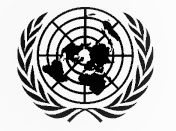On 9 May 2024, the United Nations Office for Disarmament Affairs (UNODA) partnered with the United Nations Institute for Disarmament Research (UNIDIR) to organize virtual training workshops for Permanent Missions and national focal points on preparing reports to the UN Register of Conventional Arms (UNROCA).
The UN Register of Conventional Arms was established in 1991 following the adoption of UN General Assembly resolution 46/36 L. Through the UNROCA instrument, Member States are encouraged to report on international transfers of seven categories of major conventional arms[1], as well as small arms and light weapons[2], during the previous calendar year. The deadline to do so is 31 May of each year.
Transparency in military matters remains a prerequisite for arms control, disarmament and non-proliferation and thus the maintenance of international peace and security. It acts as a confidence-building measure (CBM), thereby contributing to the prevention and reduction of ambiguities, misperceptions and tensions among Member States and, in turn, paving the way for international cooperation. Such measures can encourage restraint in the arms trade and decelerate military build-up. Transparency in armaments plays an even more crucial role during these times of uncertainty and volatility. By making information on arms transfers available, Member States can aid in the identification of destabilizing and excessive accumulations of arms and in the prevention of diversion.
More than 175 Member States have reported to UNROCA at least once since its establishment.
Even though the recent increase in the number of submissions to UNROCA is encouraging – from 62 reports submitted in 2022 to 72 submissions (around 37% of UN Member States) in 2023 – this transparency instrument remains underutilized.

The training workshops served to revitalize momentum around transparency in armaments and build countries’ reporting capacity. Participants heard about the importance of transparency in military matters, the origin and development of the UNROCA instrument, and options for reporting. Experts provided insights on practical steps involved in preparing submissions to the Register. Participants were also shown how use the online UNROCA reporting tool. Finally, participants engaged actively in a Q&A session with the experts.
In total, about 50 participants attended the workshops, representing nearly 30 Member States. Of these, three Member States have never submitted information to the UNROCA instrument, while six Member States did not do so during the past two reporting cycles.
The Office for Disarmament Affairs will continue to organize these informative and hands-on training workshops, thereby raising awareness of the UNROCA instrument and supporting States in building their reporting capacity on arms transfers.
The recording of the virtual training workshop is available here.
[1] Including: 1) Battle tanks; 2) Armored combat vehicles; 3) Large-caliber artillery systems; 4) Combat aircraft and unmanned combat aerial vehicles (UCAV); 5) Attack helicopters and rotary-wing unmanned combat aerial vehicles; 6) Warships; 7) Missiles/missile launchers.
[2] “Small arms” are, in a broad sense, weapons designed for individual use. They include, inter alia, revolvers and self-loading pistols, rifles and carbines, sub-machine guns, assault rifles and light machine guns. “Light weapons” are, generally, weapons intended for use by two or three people in a crew, although some may be carried and used by one person. They include, inter alia, heavy machine guns, handheld under-barrel and mounted grenade launchers, portable anti-aircraft guns, portable anti-tank guns, recoilless rifles, portable launchers of anti-tank missile and rocket systems, portable launchers of anti-aircraft missile systems, and mortars of a calibre of less than 75 mm.

